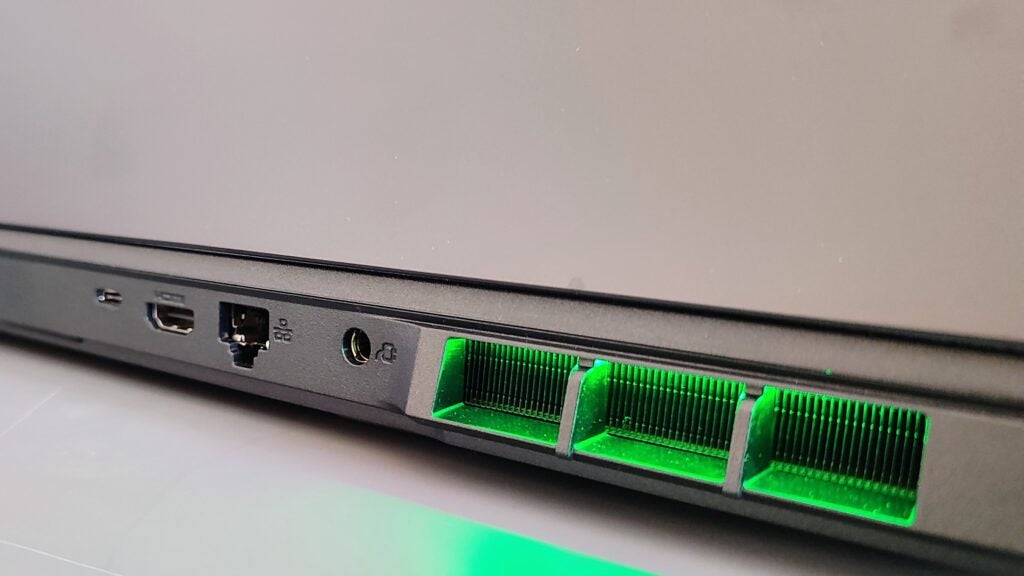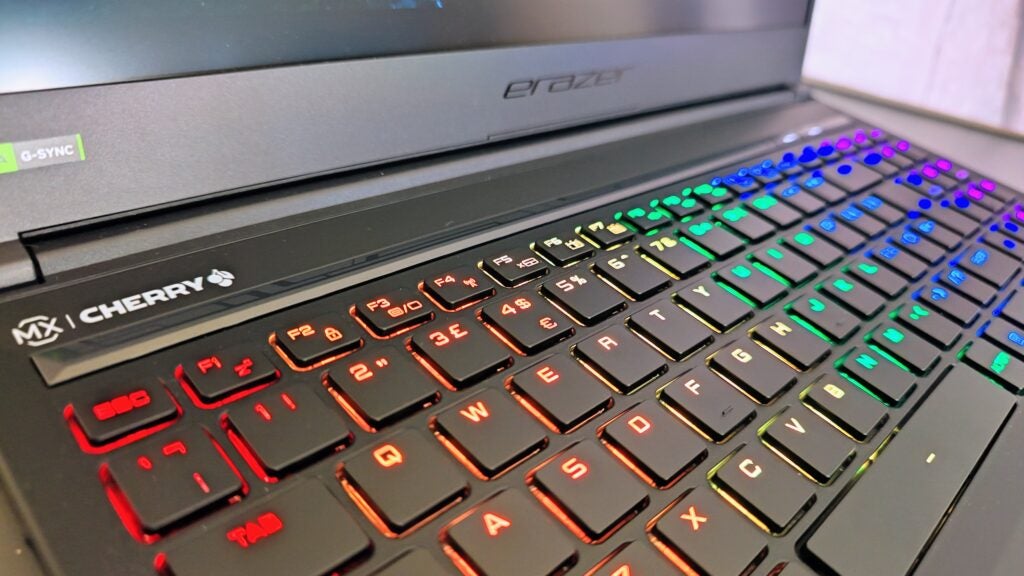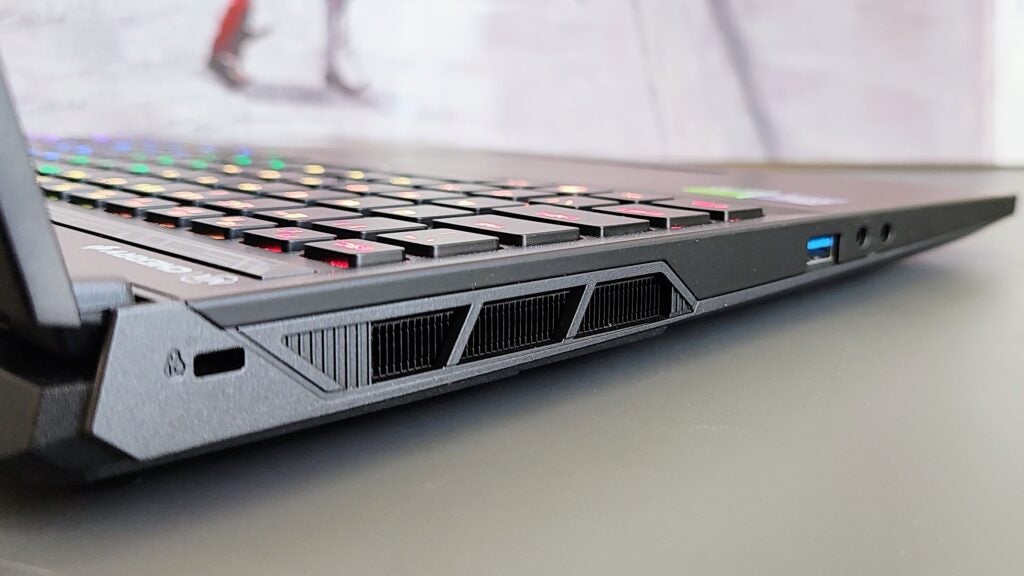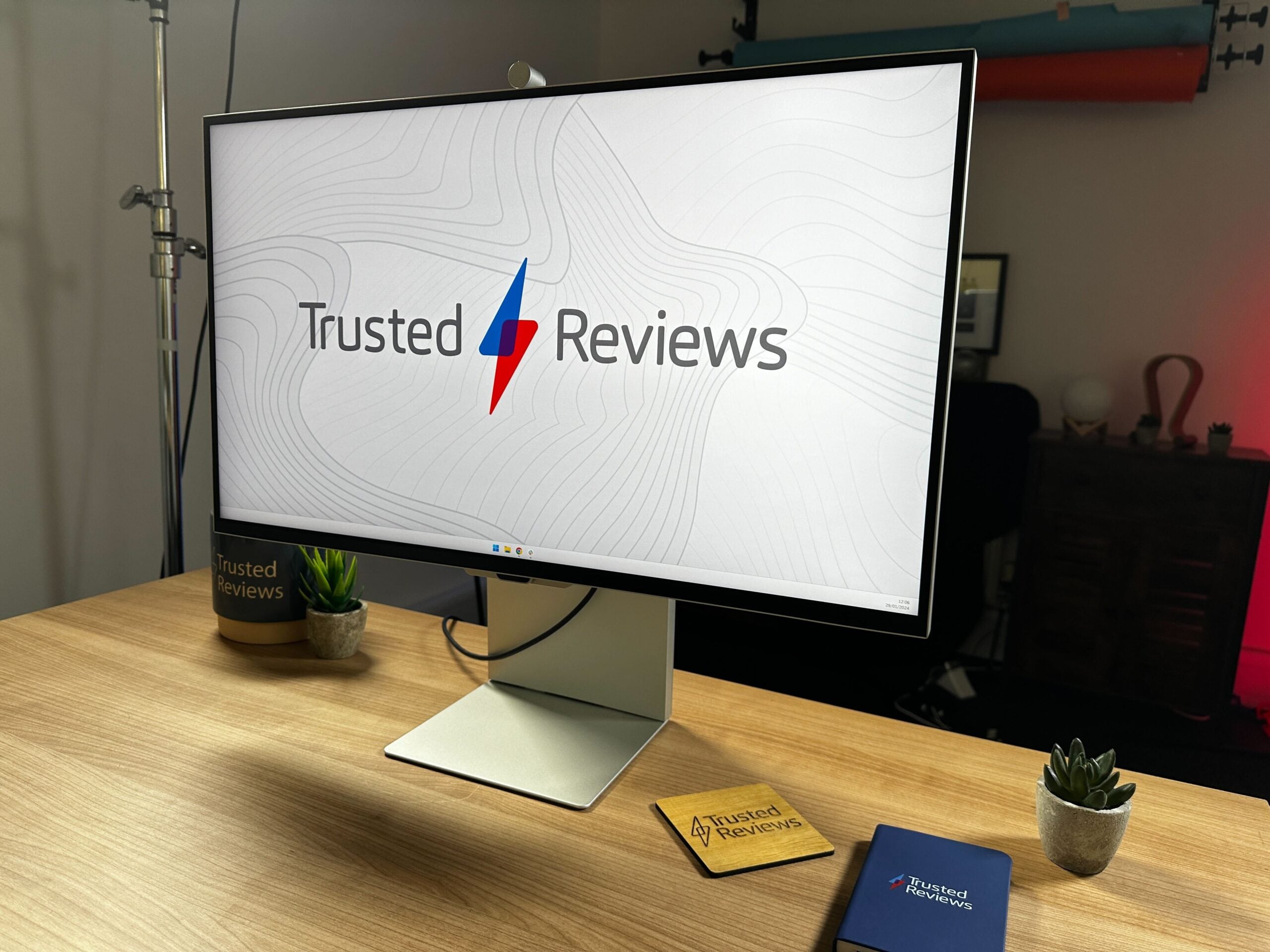Medion Erazer Major X20 Review
The best bang-for-your-buck gaming laptop in the world


Verdict
No other gaming laptop offers as much quality and performance as the Medion Erazer Major X20 for so little money. The Intel Core i9 and RTX 4070 combination offer truly impressive bang-for-buck performance. Short battery life is the X20’s only fault.
Pros
- Extraordinarily good value
- Strong gaming and productivity performance
- Excellent mechanical keyboard
- Bright 240Hz WQXGA display
Cons
- Battery life is very poor
Introduction
Once a bargain bucket brand only to be found in supermarkets, Medion is now establishing itself as the purveyor of some very tasty but affordable PCs. Our recent review of the Medion Erazer Beast X40 highlighted the progress Medion has made. The X40 now has a smaller 16-inch brother called the Medion Erazer Major X20.
The new 16-inch laptop also has such high-end features as a mechanical keyboard and Nvidia’s Advanced Optimus, along with a powerful Intel Core i9 CPU and an Nvidia RTX 4070 GPU. But, it costs less than £2000.
To put that into context, Acer’s broadly similar Predator Helios 16 will set you back £2,799 while the Asus ROG Scar Strix 16, widely regarded as the state of the gaming laptop art, will cost you £3,399. Both rival devices come with swanky Mini LED displays but, for the extra cash, you’d be forgiven for expecting that they have plenty of features and levels of performance way beyond the new Medion but, frankly, they don’t.
Design and Keyboard
- Cherry MX mechanical keyboard
- Good selection of ports
- Understated design and high-quality build
Like the X40, the X20 is based on a Tongfang barebones model, in this case, the IDX. That’s why, again, like the X40, the design is restrained and generic; black, angular and pretty unremarkable. Turn off the LED lights and no one would ever know it’s a gaming laptop. At 357 x 269 x 33mm and weighing just under 2.4kg, it’s absolutely average for a 16-inch gaming machine.

A solidly-built affair made from a combination of aluminium and rubber-coated plastic, there’s no excessive flex in the lid and no give or creaks in the main body. The underside comes away easily and once inside you have easy access to the two RAM slots, the two PCIe 4 SSD bays, the WLAN card, the two fans and the battery.
Scattered around the sides and back, you’ll find a comprehensive selection of I/O with two USB-A 3.2 Gen 2, one USB-A 3.2 Gen 1, a Thunderbolt 4/Type-C port with DP Alt Mode, a 2.5GBps Ethernet port, an HDMI 2.1 video output, an SD card reader and two 3.5mm hacks, one combo, one mic-in.
The video outputs, the Ethernet port and the DC-in jack are all at the back which helps keep your desk free of cable entanglements. Wireless coms are bang up to date with the Intel AX211 wireless card supporting the latest 6GHz Wi-Fi 6E protocol and Bluetooth 5.2.

The 2022 Medion Erazer Major – the X10 – made do with a standard chiclet keyboard but for 2023 Medion has swapped that out in favour of a far superior mechanical keyboard. It uses high-quality Cherry MX switches that have a 1.8 mm travel and a clearly audible and precise endpoint. Combine that with a rigid deck and you get an excellent typing feel and accurate feedback that makes gaming a joy.
The layout is impossible to fault and the full-size numeric keypad is a boon on a 16-inch laptop as are the full-size cursor keys. The power and performance level buttons sit apart from the main body of the keyboard above the Pause/Del/End keys which is a perfect place to avoid accidental pressing.
The keys have an RGB backlight with four levels of brightness and you can choose from over a dozen pre-set effects, one solid colour or whatever per-key illumination scheme you prefer. The control panel that controls the lighting effects, and indeed everything else on the X20, is a model of simplicity.

The multi-touch touchpad measures 116 x 72mm and its smooth surface makes finger gliding easy. The click-action is light but precise with a clear pressure point. A quick double-tap on the LED in the upper left corner turns the entire pad on or off which is a handy little feature.
Display and Sound
- Bright, sharp WXQA IPS with 240Hz refresh rate
- Supports Nvidia G-Sync and Advanced Optimus
- Speakers are loud and composed
The display is the weakest link in the X20’s armour but that’s only because it’s just plain good rather than in any way exceptional for the price. A standard 2,560 x 1,600 IPS affair it has a good maximum brightness of 411nits and a good contrast ratio of 1,263:1. As you can deduce from the resolution, this is a 16:10 display, a squarer layout than 16:9 and one better suited to gaming or working than watching widescreen video, due to the thicker black bars that perforce fill the space above and below the image.
The colour gamut coverage could be better with 93.9% of the sRGB gamut available, but only 68% Adobe RGB and 70.8% DCI-P3. Though, that’s typical of gaming laptops in this price bracket so not a stick to beat the X20 with.

The Medion control panel lets you mess around with the display colour settings until the cows come home but with the colour enhancement feature turned off, the panel recorded a Delta-E variance against the sRGB profile of 1.8 which is comfortably below the 2 at which a trained eye will start to notice colour deviation and well below 3 at which the untrained eye will spot anything amiss.
Motion handling is again good rather than outstanding. Support for Nvidia’s G-Sync means that screen tearing is never an issue and the 240Hz refresh rate means the action moves along very smoothly. There is some motion blur to be seen in testing and there’s no overdrive facility to dial it down though I have to admit to not noticing it in actual gameplay.
You’ll seek in vain for any indication that the X20 is fitted with Advanced Optimus, the Nvidia system that acts as an automatic multiplexer switch but it is there. That means you can move in and out of the discrete GPU mode without the need to reboot Windows though there is the usual 2-3 second display freeze as the display system switches between GPUs. If you prefer, you can put the X20 into permanent discrete GPU mode by using the MUX switch in the Medion control panel.
Medion makes no power output claims for the speaker system but the X20 is every bit as loud as other laptops in this category, including some costing much more. The sound quality is good with plenty of punchy bass and clear detail and no distortion even at maximum volume levels.
Performance
- Gaming performance is outstanding for the price
- No thermal throttling and little fan noise
- Productivity performance matches the very best laptops
You are unlikely to be disappointed by any system built around an Intel Core i9-13900H CPU, Nvidia RTX 4070 GPU with a TGP of 140W and 8GB of vRAM and 32GB of quad-channel system RAM. As little as 6 months ago the performance the X20 is capable of would have been unthinkable in a laptop let alone one with a sub-£2,000 price tag.
Many people, myself included, regard the RTX 4070 as the sweet spot in the latest Nvidia GPU lineup. Cheaper than the RTX 4090 and 4080 but with significantly more cores than the RTX 4060 (4,608 vs 3,072), it’s a thoroughly competent bit of kit.

Here are the frame rates from some Triple-A games played at 2,560 x 1,600 at the highest details levels, ray tracing set to the maximum and no upscaling tech engaged: Returnal scored 55fps, Metro: Exodus came in at 39fps, Cyberpunk 2077 managed 46fps and, lastly, Borderlands 3 at 79fps.
There’s plenty of headroom to up the frame rate on really demanding titles; drop the resolution to FullHD and switch DLSS to balanced and Metro: Exodus jumps to 75fps and Cyberpunk 2077 to 84fps. Laptops running on Nvidia’s RTX 4080 and 4090 GPUs can do better but in my opinion, not by enough to justify their extra cost.
Turning to the synthetic benchmarks you’ll see that the X20 gives nothing away to the Asus ROG Scar Strix 16, a laptop costing £1,400 more.
In the Cinebench R23 test the X20 actually beat the Asus by 25,321 to 25,152 while in the PCMark 10 and Geekbench 5 tests, the Asus only scraped a victory by 8,609 points to 8,359 in the former and 19,266 to 19,001 in the latter. In everyday use, the X20 is every bit as fast as the Scar Strix 16 and I can think of no higher accolade.
Medion boasts that the X20 features a “liquid metal thermal compound for processor and graphics card”. Whatever that actually entails it certainly works because thermal management is very good with little external heat generated, no throttling and less fan noise than you’d expect from a laptop with this level of performance. When the fans run at full gallop the sound they generate is more of a whoosh than a roar.
My review sample came with a 1TB Phison SSD which returned sequential read speeds of 7.0GB/sec and write speeds of 5.0GB/sec. That’s pretty darned quick for a laptop with this price tag.
Battery life
- The battery is very small for a gaming laptop
- Even with careful use, 3 hours is the best you’ll get
As soon as I saw the capacity of the X20’s battery my heart sank. 62.3Wh is a pitifully low capacity for a gaming laptop or, indeed, any laptop with such power-hungry components. The PCMark 10 Office test managed to drain the battery in 1 hour 45, which is really low. If you fire up a game, you can reduce that figure to less than 30 minutes. Turn the display brightness right down and switch off everything non-essential, you can just about eke out 3 hours from a charge but that’s it.
It’s disappointing but this is a laptop with high-end gaming prioritised above all else so, if you’re spending £2,000 on this device, know that it’s made for being plugged into power almost all of the time to get the best out of its components.
Latest deals
Should you buy it?
Immense gamer power at a stunningly reasonable price
At the risk of repeating myself, the performance that the Medion Erazer Major X20 delivers for the price is outstanding. When it comes to productivity, the X20 can match the far more expensive Asus ROG Strix Scar 16 and, even though, the Asus has an edge in gaming prowess, thanks to its RTX 4080 GPU, I’d argue that the difference is in no way proportional to the difference in cost.
Poor battery life and a less well-known brand
There are only two reasons not to buy the X20. Firstly the battery life is poor even for a gaming laptop so if you want something to use away from a power supply then it’s not the laptop for you. The other reason is the brand. Just as some people will never buy a Skoda Octavia over a more expensive Audi A3 or VW Golf despite them being in many ways the same, some folk will always pay a premium for the Alienware or ROG badge.
Final Thoughts
If anyone came up to me and asked me to recommend a high-end gaming laptop the Medion Erazer Major X20 is now what I’d suggest. Performance is extremely impressive regardless of the price and the keyboard and speaker system can hold their own against the best on the market.
If you consider other good 16-inch gaming laptops like Acer’s Predator Helios 16 and the Asus ROG Scar Strix 16 they offer performance advantages that are marginal at best and neither has a keyboard that can touch the Medion. Yes, they have Mini LED displays but I’ve yet to be convinced that this is a must-have feature on a gaming laptop that commands a price premium.
As a value-for-money proposition, the Medion Erazer Major X20 has no equal and, battery life aside, no weaknesses or faults worth mentioning. If I had £3,000 to spend on a gaming laptop, I’d spend £2,000 on the Medion and take a holiday to somewhere exotic with the change.
How we test
Every laptop we review goes through a series of uniform checks designed to gauge key things including build quality, performance, screen quality and battery life.
These include formal synthetic benchmarks and scripted tests, plus a series of real-world checks, such as how well it runs popular apps.
We used as our main laptop for at least a week.
Tested the performance via both benchmark tests and real-world use.
We tested the screen with a colorimeter and real-world use.
We tested the battery with a benchmark test and real-world use.
FAQs
It is now. Once upon a time in the UK Medion was known for its entry-level laptops that were often sold in supermarkets but in recent years it has started to move away from that bargain-basement market and is now bringing the more expensive PCs that it sells in Germany into the UK. The 2023 X20 and X40 models are the best examples of this change in market positioning.
Though a German-registered company Medion is a wholly owned subsidiary of Lenovo, one of the world’s premier PC makers. Lenovo completed the takeover of Medion in June 2011 and it was the Chinese OEM’s biggest takeover since it bought IBM’s PC business 6 years earlier.








